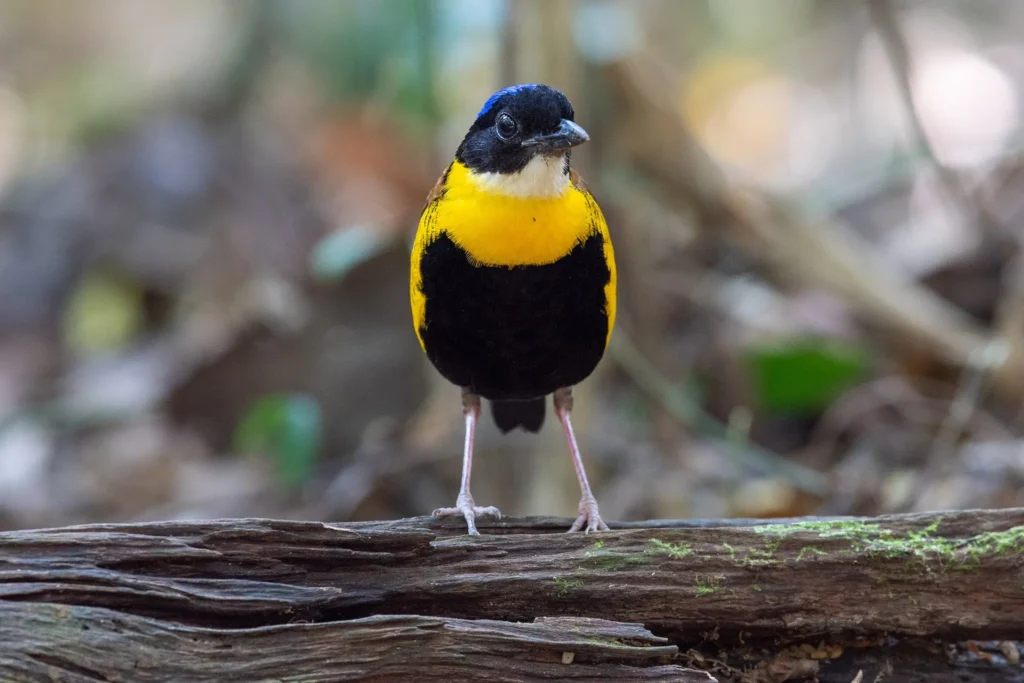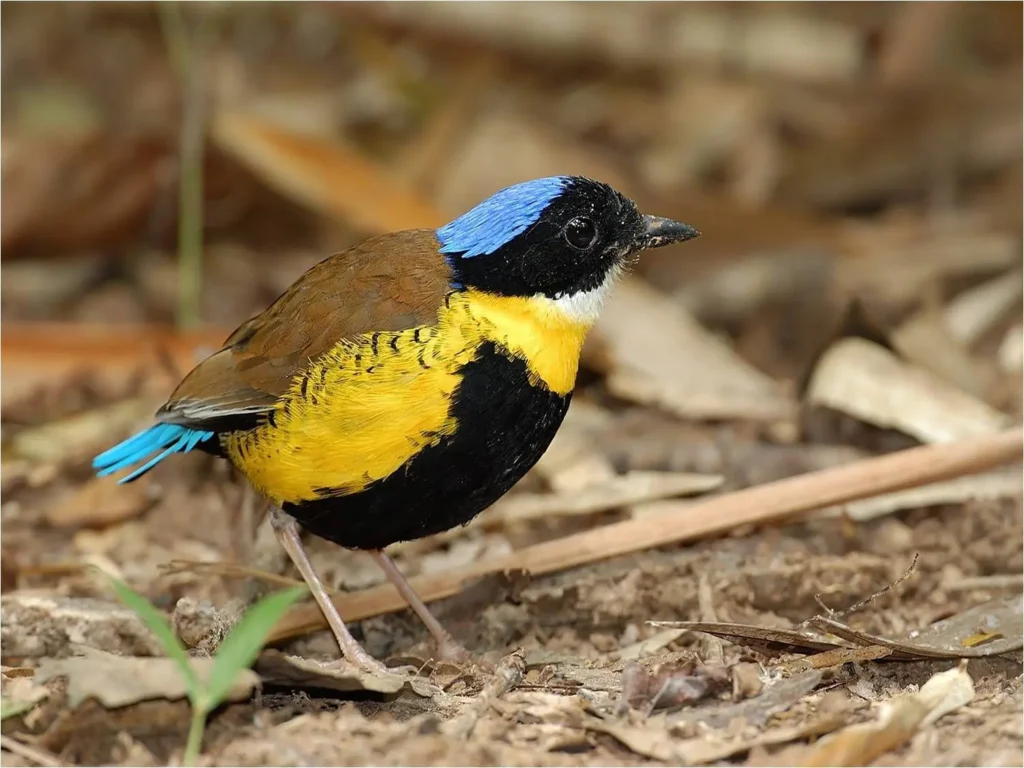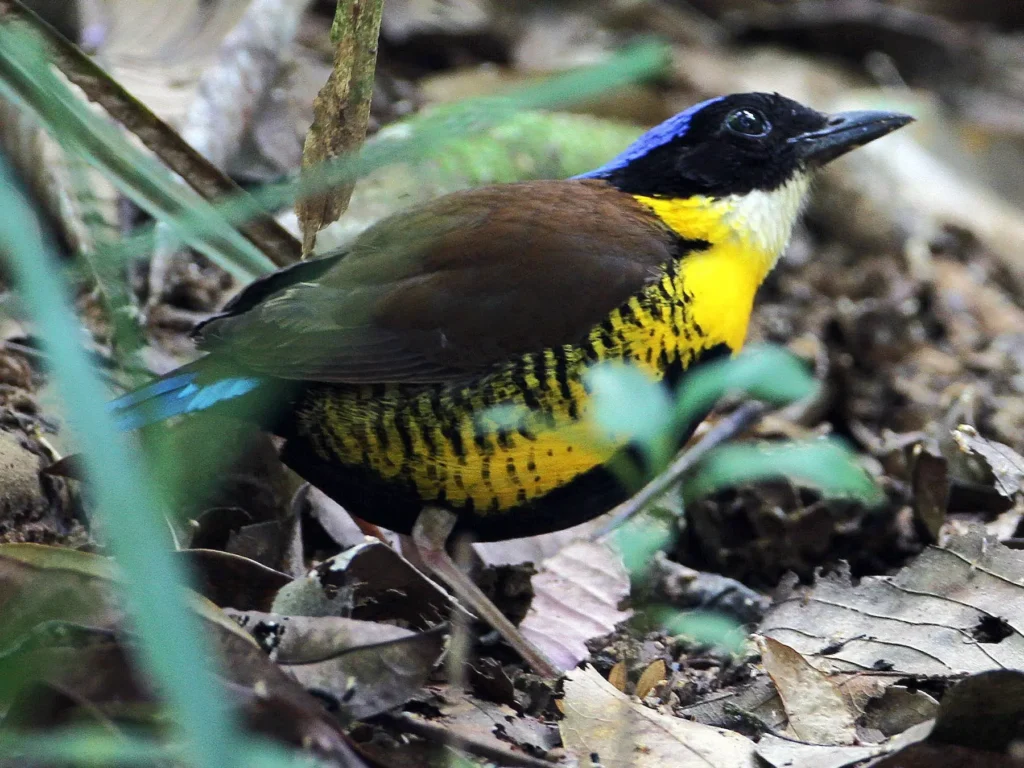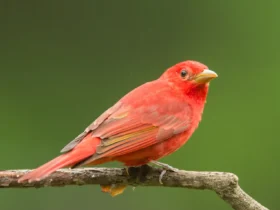Gurney’s Pitta (Hydrornis gurneyi) is a rare and captivating bird species that inhabits the lush tropical rainforests of Southeast Asia. With its vibrant plumage, melodious calls, and elusive nature, this colorful bird has captured the fascination of birdwatchers and conservationists around the world. In this article, we will delve into the captivating world of Gurney’s Pitta, exploring its appearance, habitat, behavior, and the conservation efforts aimed at protecting this endangered species.
Gurney’s Pitta images










Appearance and Plumage
Gurney’s Pitta is a medium-sized bird, measuring approximately 18 centimeters in length. It exhibits a unique combination of vibrant colors, with a predominantly black head, neck, and upperparts, contrasted by a striking crimson belly and lower breast. The wings are adorned with rich shades of green and blue, and the bird’s eyes stand out with a distinctive yellow color. Both males and females share a similar plumage pattern, making it challenging to distinguish between the sexes visually.
Habitat and Distribution
Gurney’s Pitta is endemic to the lowland evergreen forests of Southeast Asia. It is primarily found in the southern parts of Myanmar (Burma) and Thailand, with historically documented populations also reported in Malaysia. These birds inhabit dense, moist forests with a dense undergrowth of shrubs and trees, where they find suitable nesting sites, food sources, and protection.
Behavior and Feeding Habits
Gurney’s Pitta is primarily insectivorous, feeding on a variety of small invertebrates such as insects, spiders, and earthworms. They forage on the forest floor, flipping leaf litter and debris with their bills to uncover prey. These birds are known for their unique feeding behavior, involving a distinct hop-and-stop motion as they move through the forest undergrowth in search of food.
Breeding and Nesting
Gurney’s Pitta breeds during the monsoon season, which typically occurs from April to September. Males establish territories and attract mates through melodious calls and vibrant displays. The female builds a cup-shaped nest on or near the ground, hidden amidst vegetation. A clutch of 2-4 eggs is laid, and both parents share incubation duties. The chicks hatch after an incubation period of approximately 18-20 days and are cared for by both parents until they fledge.
Conservation Status and Threats
Gurney’s Pitta is listed as critically endangered on the IUCN Red List of Threatened Species. The primary threats to the species are habitat loss and degradation due to deforestation, logging, and land conversion for agriculture. Additionally, the illegal bird trade poses a significant threat, as Gurney’s Pitta is highly sought after by collectors and enthusiasts.
Conservation Efforts
Various conservation organizations and governments are working together to protect Gurney’s Pitta and its habitat. Efforts include establishing protected areas, implementing conservation initiatives, raising awareness about the species’ plight, and conducting research to better understand its ecology and behavior. Local communities are also involved in conservation efforts to promote sustainable land use practices and reduce the illegal trade of these magnificent birds.
Gurney’s Pitta is a true jewel of the tropical rainforests, with its vibrant plumage and enchanting presence. This endangered species serves as a reminder of the fragility of our ecosystems and the urgent need for conservation. By preserving their habitats, raising awareness, and supporting conservation initiatives, we can contribute to the survival and long-term protection of Gurney’s Pitta, ensuring that future generations have the opportunity to admire the beauty and wonder of this remarkable bird.








